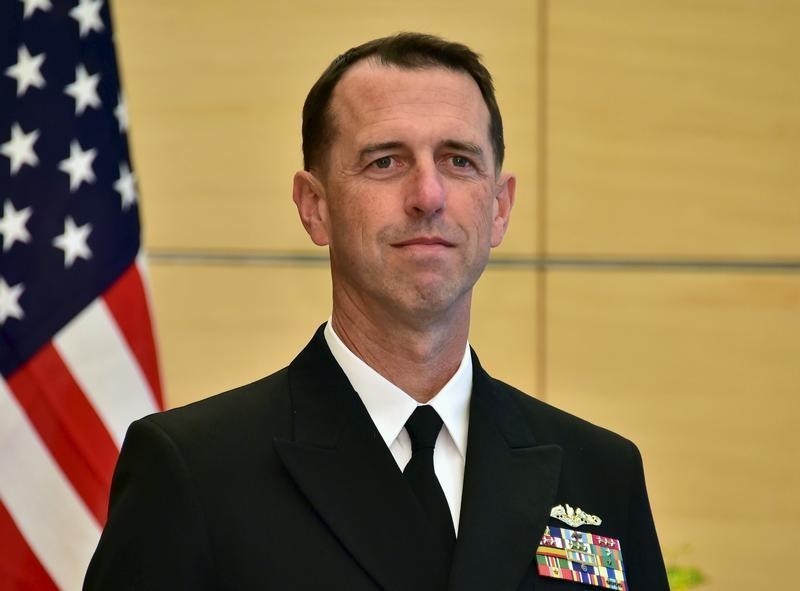(NationalSecurity.news) The U.S. Navy will likely increase its requirement for a 308-ship fleet given the rapidly changing world security situation, including the U.S. battle against Islamic State, Chief of Naval Operations Admiral John Richardson said on Thursday.
Richardson said the Navy was reviewing an assessment completed in 2012 and updated in 2014, before Russia’s reemergence as a “global power competitor,” and the start of the U.S.-led campaign to defeat Islamic State militants in Iraq and Syria.
“I would bet a paycheck that it’s going to be a number greater than 308 ships, just by virtue of the additive nature of the complexity and the contestants that are confronting us right now,” Richardson told an event hosted by Washington defense consultant Jim McAleese and Credit Suisse.
The top U.S. naval officer said the Navy was already increasing its purchases of Virginia-class submarines built by General Dynamics Corp and Huntington Ingalls Industries Inc., but would also invest in unmanned vessels.
The study is due to be completed this summer in time to inform the Navy’s fiscal 2018 budget proposal, according to a Navy official. The Navy’s fleet is currently around 285 ships.
Republican lawmakers have repeatedly called for an increase in the size of the Navy’s fleet, arguing that the sheer number of threats around the world requires more ships to help the United States “project power.”
Others argue that today’s ships are more capable and advanced than in years past, increasing the power and capability of each ship and making the larger fleets of the 1980s unnecessary.
In recent years threats have to U.S. naval supremacy have been increasing.
China has been modernizing its submarines and surface ships, including adding aircraft carriers, while reclaiming atolls and islets in the South China Sea, where Beijing is building air strips and deploying air defense missiles.
Speaking recently at the Atlantic Council, Thomas L. McNaugher, a professor at The Georgetown University, noted that while the Chinese navy possesses some amphibious assault capability, mustering enough resources to invade Taiwan would be “an extremely dicey operation” because the military is still dominated by the army. In addition, he noted, the Chinese have had no recent experience in that, or any other kind of, warfare, USNI News reported.
“Right now, they’re capable of moving about two divisions at a time” over water, he said in response to a question. “But they’re working on” overcoming those limitations, he added.
A member of the council’s Brent Scowcroft Center on International Security, Roger Cliff, added that despite Beijing’s 600-percent increase in real-term defense spending over the past two decades, “important weaknesses remain” in Chinese technology, logistics, training and organization.
Russia has also been rapidly modernizing its fleets after decades of neglect.
As reported by the Washington Free Beacon, the report from the Office of Naval Intelligence [PDF] warns that Russian naval forces are quickly being modernized with new advanced submarines and lethal ballistic and cruise missiles, in particular.
Included in the buildup are three new classes of submarines and a number of new warship types, the report notes, while warning that the vessels will “provide a flexible platform for Russia to demonstrate offensive capability, threaten neighbors, project power regionally, and advance President Putin’s stated goal of returning Russia to clear great power status.”
After the Soviet Union disintegrated in 1991 the Russian navy was dramatically reduced in size, while several new weapons systems were canceled and others mothballed. In general, the navy fell into disrepair and many ships quickly became obsolete.
Reuters contributed to this report.
NationalSecurity.news is part of the USA Features Media network of sites.


